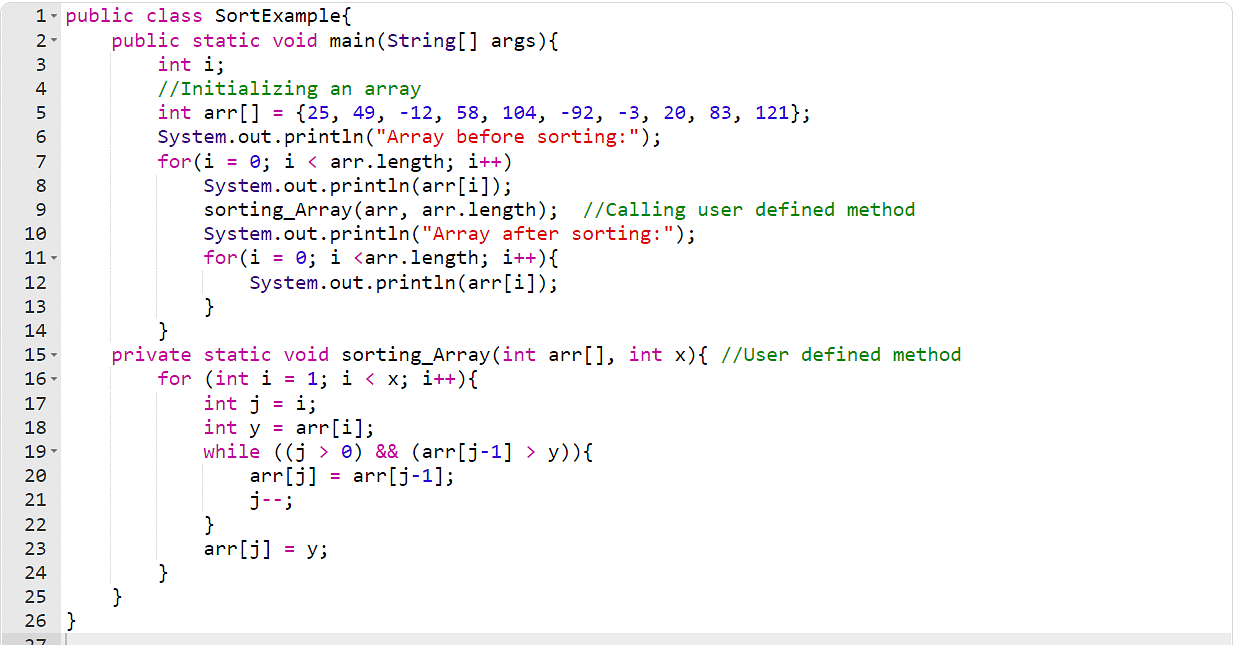
Loop through the array using a traditional for loopįor (int i = 0 i < myArray. To loop through an array in Java using a for loop, you can use either a traditional for loop or a for-each loop (also known as an enhanced for loop). Data in multidimensional arrays are stored in tabular form (in row major order). For example, you can declare an array of integers like this: Use a foreach loop to iterate through the array. Array-Basics in Java Multidimensional Arrays can be defined in simple words as array of arrays.
#FOR LOOP JAVA ARRAY HOW TO#
In this blog post, we will look at how to use both methods and compare their advantages. Declare an array of the desired data type. As you can see, there are several different ways to work with arrays in Java.Looping through an array in Java can be done using either a traditional for loop or a for-each loop (also known as an enhanced for loop). I hope these Java String array examples have been helpful. I think you’ll agree that the Java 5 syntax for looping through an array is more concise, and easier to read. create a new instance of our class here. our constructor print out the String array here

You don’t have to declare a String array in two steps, you can do everything in one step, like this: public class JavaStringArrayTests Before Java 5, the way to loop through an array involved (a) getting the number of elements in the array, and then (b) looping through the array with a for loop. Array iteration used to perform any operation on array. 3) Declaring and populating a Java String array An array can be iterated by using for loop, for each loop and while loop with static and dynamic values. This array programming approach is very similar to the previous approach, but as you can see, I don't give the array a size until the populateStringArray method is called.

you'll probably determine this size based on some algorithm
#FOR LOOP JAVA ARRAY CODE#
Then somewhere later in your code you can (a) give the array a size and then (b) populate it as desired, like this: private void populateStringArray() If you need a String array but don’t initially know how large the array needs to be, you can declare an array variable without giving it an initial size, like this: public class JavaStringArrayTests 2) Declare a Java String array with no initial size Later on, in a Java method in your class, you can populate the elements in the array like this: private void populateStringArray()Īs this example shows, Java arrays begins with an element numbered zero they are zero-based, just like the C programming language. In that example, I declare a String array named toppings, and then give it an initial size of 20 elements. If you know up front how large your array needs to be, you can (a) declare a String array and (b) give it an initial size, like this: public class JavaStringArrayTests 1) Declaring a Java String array with an initial size Because creating a String array is just like creating and using any other Java object array, these examples also work as more generic object array examples. In this tutorial, I’ll show how to declare, populate, and iterate through Java string arrays, including the newer for-loop syntax. Java String array FAQ: Can you share some Java array examples, specifically some String array examples, as well as the new for loop syntax that was introduced back in Java 5?


 0 kommentar(er)
0 kommentar(er)
